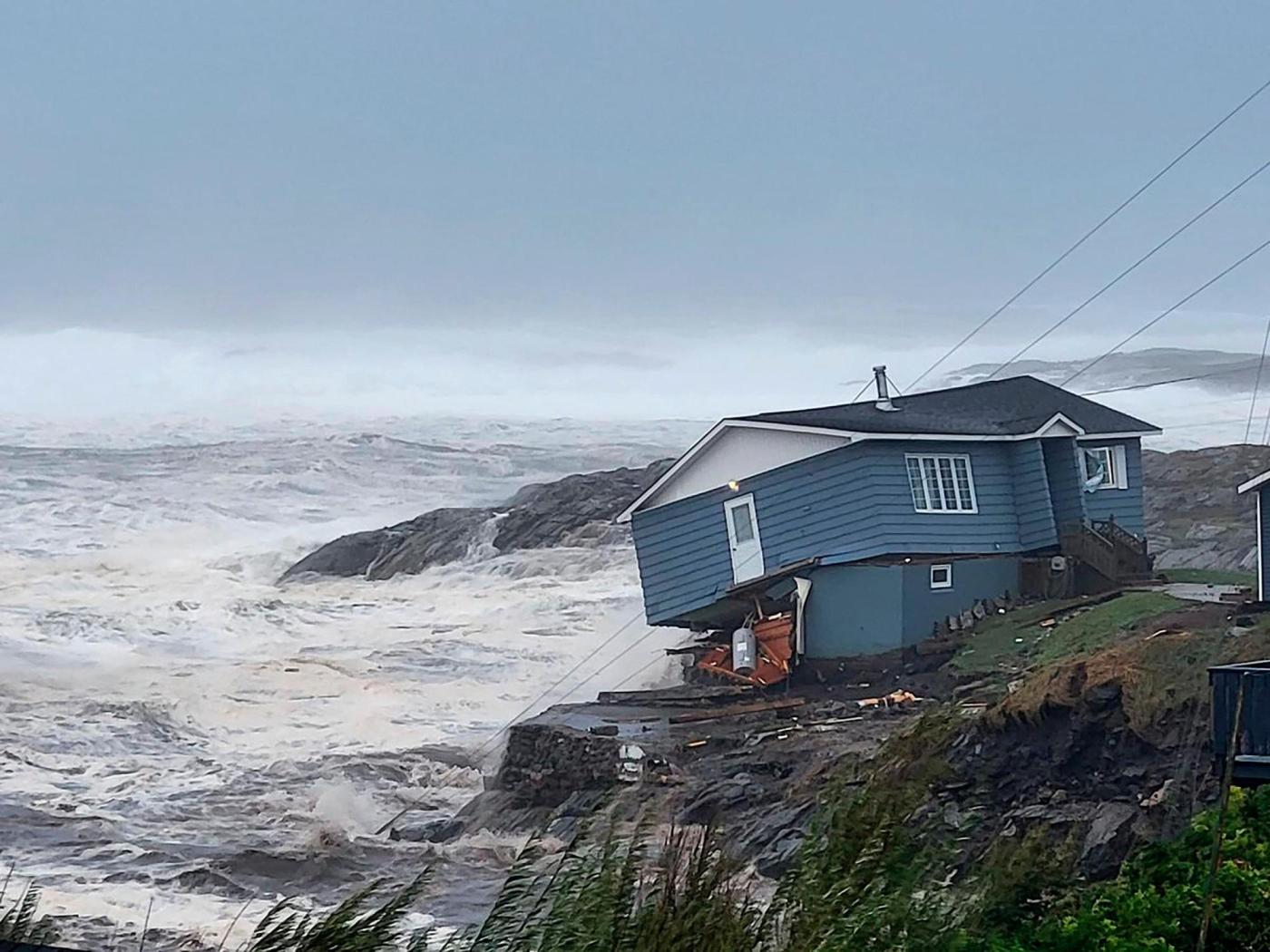TORONTO — Hundreds of thousands of people in Atlantic Canada remained without power Sunday and officials tried to assess the scope of devastation of from former Hurricane Fiona, which swept away houses, stripped off roofs and blocked roads across the country’s Atlantic provinces.
After surging north from the Caribbean, Fiona came ashore before dawn Saturday as a post-tropical cyclone, battering Nova Scotia, Prince Edward Island, Newfoundland and Quebec with hurricane-strength winds, heavy rains and huge waves.
Defense Minister Anita Anand said Canadian troops would help remove fallen trees throughout Eastern Canada, restore transportation links and do whatever else is required for as long as it takes. She didn’t specify how many troops would be deployed.
Fiona was blamed for at least five deaths in the Caribbean, and while there were no confirmed fatalities in Canada, authorities on Sunday were searching for a 73-year-old woman missing in the hardest hit town of Channel-Port Aux Basques on the southern coast of Newfoundland.
“She’s likely washed out to sea but we haven’t been able to confirm that,” said Cpl. Jolene Garland, a spokeswoman for the Royal Canadian Mounted Police.
Police said the woman was last seen inside the residence just moments before a wave struck the home Saturday morning, tearing away a portion of the basement.
As of Sunday morning, more than 252,000 Nova Scotia Power customers and over 82,000 Maritime Electric customers in the province of Prince Edward Island — about 95% of the total — remained in the dark. So were more than 20,600 homes and businesses in New Brunswick.
More than 415,000 Nova Scotia Power customers — about 80% in the province of almost 1 million people — had been affected by outages Saturday.
Utility companies say it could be days before the lights are back on for everyone.
Cape Breton Regional Municipality Mayor Amanda McDougall said Sunday over 200 people had been displaced and were in temporary shelters. Over 70 roads are completely inaccessible in her region, which declared a state of emergency. She said she couldn’t count the number of homes damaged in her own neighborhood.
She said it was critical for the military to arrive and help clear debris, noting that the road to the airport is inaccessible and the tower has significant damage.
McDougall said it is amazing there are no injuries.
“People listened to the warnings and did what they were supposed to do and this was the result,” she said
Prince Edward Island Premier Dennis King said few communities were spared damage, with the devastation seemingly beyond anything before seen in the province.
Entire structures were washed into the sea as raging surf pounded Port Aux Basques, Newfoundland.
“This is not a one-day situation where we can all go back to normal,” Mayor Brian Button said on social media. . Unfortunately, this is going to take days, it could take weeks, it could take months in some cases.”
Much of the town of 4,000 had been evacuated and Button said officials on Sunday will identify areas where people can safely go back to their homes. He asked for patience, noting some residents are showing up at barricades angry and wanting to go to home.
Government officials across Eastern Canada were assessing the full scope of damage caused by the storm now that the fierce winds have subsided in most places. Fiona had moved inland over southeastern Quebec.
The disaster caused Prime Minister Justin Trudeau to cancel his trip to Japan for the funeral for assassinated former Prime Minister Shinzo Abe.
“We are seeing devastating images coming out of Port aux Basques. PEI (Prince Edward Island) has experienced storm damage like they’ve never seen. Cape Breton is being hit hard, too,” Trudeau said.
“There are people who see their houses destroyed, people who are very worried. We will be there for you,” Trudeau added.
Mike Savage, mayor of Halifax, said the roof of an apartment building collapsed in Nova Scotia’s biggest city and officials had moved 100 people to an evacuation center. He said no one was seriously hurt.
The Canadian Hurricane Centre tweeted that Fiona had the lowest pressure — a key sign of storm strength — ever recorded for a storm making landfall in Canada.
“We’re getting more severe storms more frequently,” Trudeau said.
He said more resilient infrastructure is needed to withstand extreme weather events, saying that what was once a 1-in-100 year storm might now arrive every few years because of climate change.
Peter MacKay, a former foreign and defense minister who lives in Nova Scotia, said he had never seen anything to match Fiona, with winds raging through the night and into the afternoon.
“We had put everything we could out of harm’s way, but the house got hammered pretty hard. Lost lots of shingles, heavy water damage in ceilings, walls, our deck is destroyed. A garage that I was building blew away,” MacKay said in an email to The Associated Press.
Stephen Groves in Sioux Falls, South Dakota, contributed to this report.
Join the Conversation
We invite you to use our commenting platform to engage in insightful conversations about issues in our community. We reserve the right at all times to remove any information or materials that are unlawful, threatening, abusive, libelous, defamatory, obscene, vulgar, pornographic, profane, indecent or otherwise objectionable to us, and to disclose any information necessary to satisfy the law, regulation, or government request. We might permanently block any user who abuses these conditions. As of June 15, 2022, comments on DenverPost.com are powered by Viafoura, and you may need to log in again to begin commenting. Read more about our new commenting system here. If you need help or are having issues with your commenting account, please email us at memberservices@denverpost.com.






